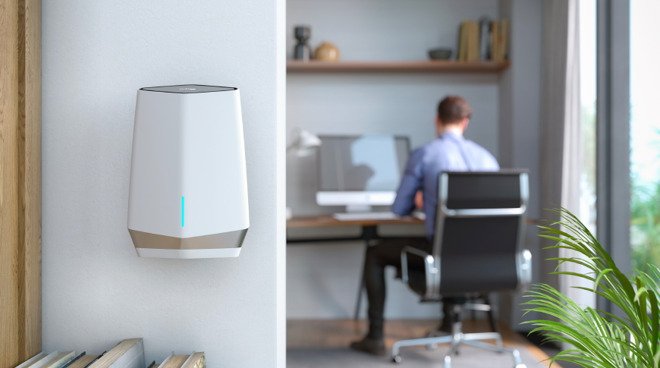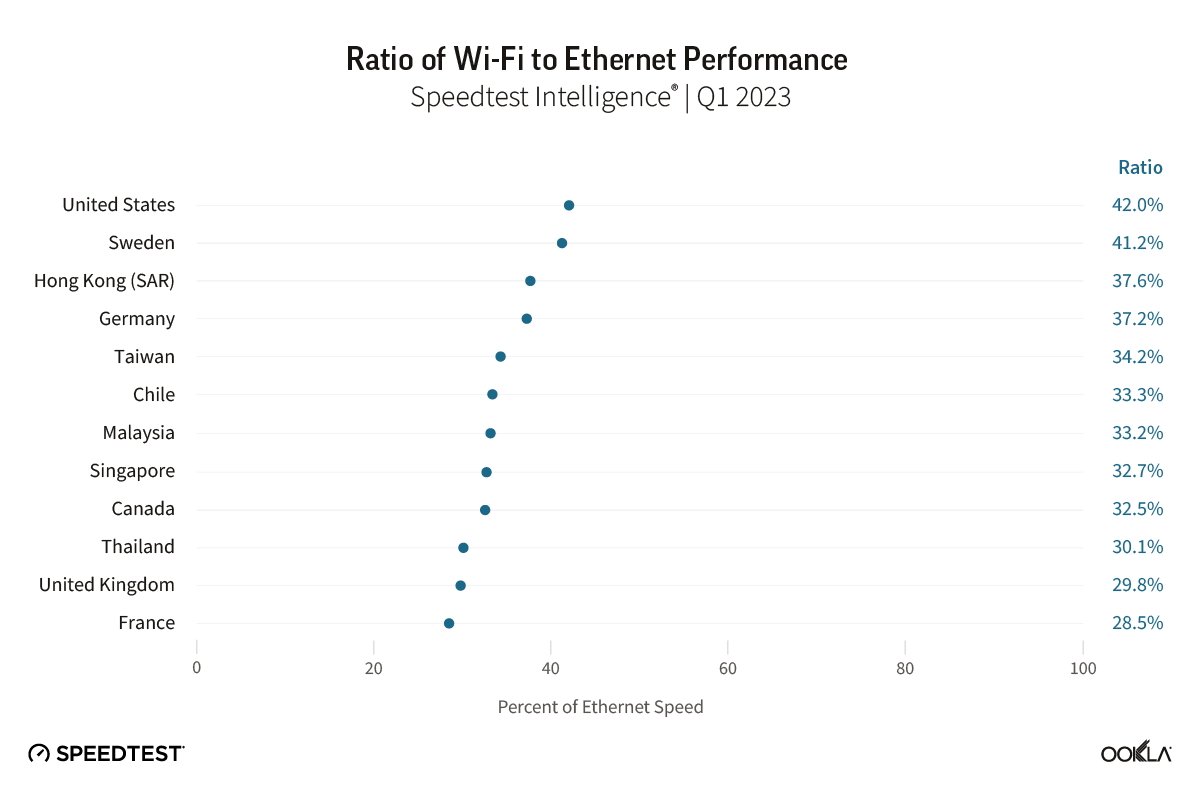Despite Wi-Fi performance still lagging far behind Ethernet performance in homes, it appears there's hope for the future from what some might consider an unlikely source — the internet service providers.
In an in-depth look at Wi-Fi performance in homes all across the globe, Ookla found that overall Wi-Fi performance is still trailing what homes are getting from ethernet connections. In fact, the disparity between the two can be between around 30% to 40%.
This performance difference is present even in advanced fixed broadband networks. However, it is in these markets where there is hope thanks to adopting better technology and, just as importantly, sending out better hardware to households.
Wi-Fi 4 and Wi-Fi 5 remain the dominant Wi-Fi access technologies across the globe, racking up an astonishing 89 percent of the market as of the first quarter 2023. Markets like the United States, China, Hong Kong (SAR), Canada, and Singapore are pushing towards Wi-Fi 6/6E adoption, though.
It's with this adoption that the difference in Wi-Fi and Ethernet performance starts to shrink. ISPs in the United States, Canada, Singapore, Sweden, France, and Germany are driving adoption of Wi-Fi 6/6E routers, banking on better fiber availability in these markets as well.
However, the report indicates that ISPs still have room to improve, namely in markets not as advanced as others. In these areas, the service providers aren't adopting more advanced routers, either, which maintains the status quo between Wi-Fi and ethernet performance.
If you're looking for router hardware, the report states that ASUS is leading that charge with 39% of its options supporting Wi-Fi 6/6E. Netgear is in second place with a distant 26% of its routers supporting the same Wi-Fi technologies.
Ookla indicates that Wi-Fi 6/6E should be the focus for ISPs right now, especially as it relates to smartphones like the iPhone. Device support for these technologies helps drive adoption, but Apple, Samsung, and others aren't moving quickly to adopt Wi-Fi 7 at this point.
"With the two largest smartphone vendors globally, Samsung and Apple, currently shunning Wi-Fi 7, ISPs waiting to see if they can leapfrog Wi-Fi 6E to Wi-Fi 7 should stay their hands. The fact that China still needs to allocate the 6 GHz spectrum band — key for Wi-Fi 6E and 7 — for unlicensed use is also significant, and appears to have weighed on the Wi-Fi 6E adoption among China's leading Android smartphone manufacturers," according to Ookla.
To that point, while there were rumors that Apple would adopt support for Wi-Fi 6E with the iPhone 14 lineup, that did not turn out to be the case. It's worth noting Apple does support Wi-Fi 6E with the M2-equipped iPad Pro lineup, the 2023 14-inch MacBook Pro, the 2023 16-inch MacBook Pro, and the latest Mac mini model.
 Evan Selleck
Evan Selleck








-m.jpg)






 Malcolm Owen
Malcolm Owen
 Charles Martin
Charles Martin



 William Gallagher
William Gallagher
 Christine McKee
Christine McKee
 Marko Zivkovic
Marko Zivkovic









10 Comments
I'm a little confused about why they are using ratios as a means of performance comparison. I see that they are using median WiFi speed to median Ethernet speed. That's okay, but as Ethernet evolves to greater performance levels using 2.5 Gbps and 10 Gbps hardware the median Ethernet speed will increase and result in a reduced ratio. Such as reduction in the ratio due to improved Ethernet speed would not be a bad thing at all, especially for devices connected via Ethernet and for wireless access points connected to the router via Ethernet backhaul. Likewise, I wouldn't want to improve the ratio by reducing the Ethernet performance, which would be the case.
In my mind it would be more informative see the median raw data values for both WiFi and Ethernet just to make sure we're always seeing exactly what we are getting from our composite network setups. If we're going to beat on the ISPs to supply better networking gear, why not ask for better WiFi and better Ethernet?
It's worth mentioning that some ISPs (in Europe at least) are rolling out 5G routers and reducing reliance on Wi-Fi and fibre.
At the same time FTTR is rolling out in some markets.
Even worse is that my isp is in the habit of first increasing advertised download speed and saying that “Look, you are getting more speed for the same price” and a few months later increasing the price. To add insult to injury, I never get the speed increase and am stuck at 110 MBPS even though they advertise as being 200 MBPS. When I ask them what the problem is, I get the response that the speed isn’t guaranteed. My response is how about half the speed for half the price. That never goes over well.